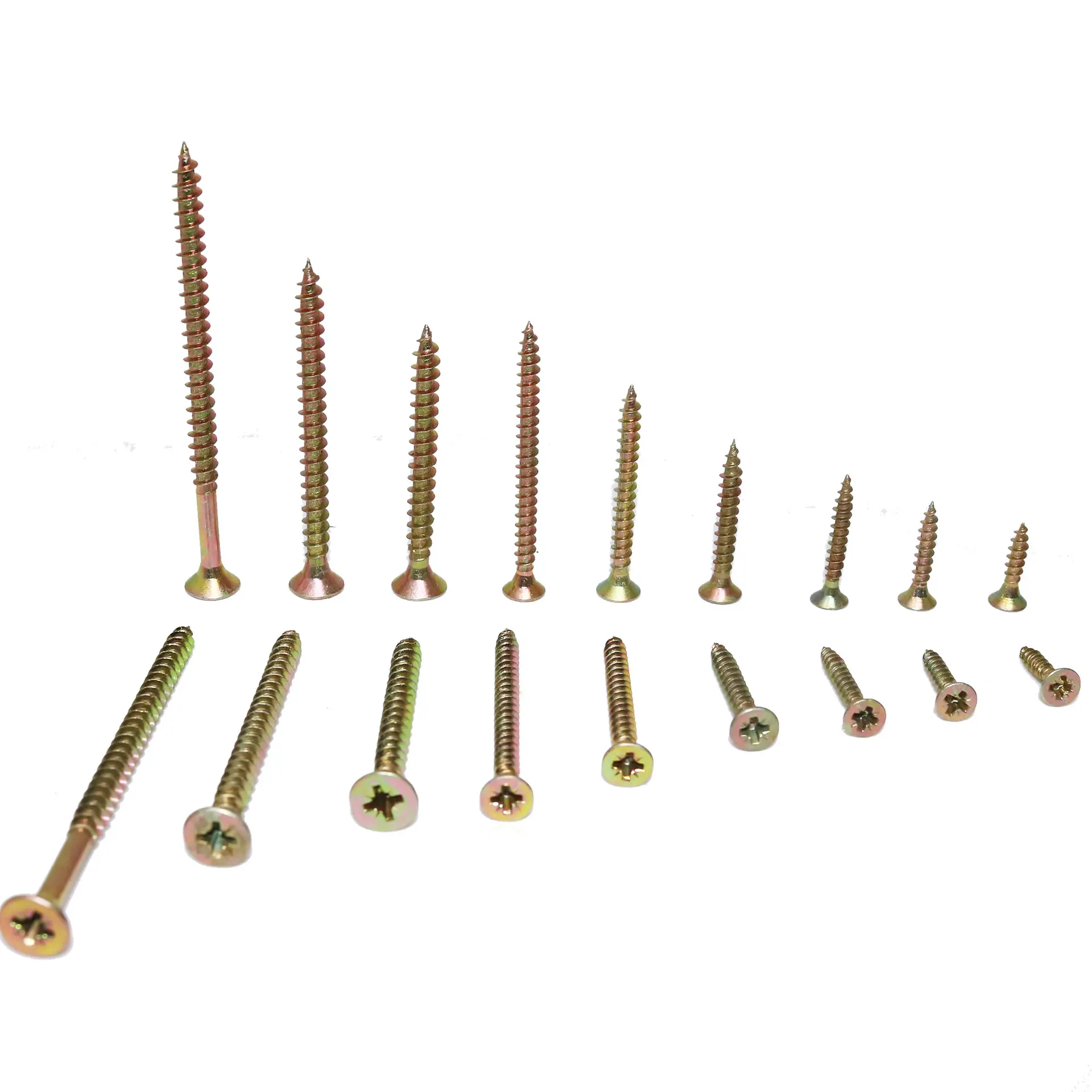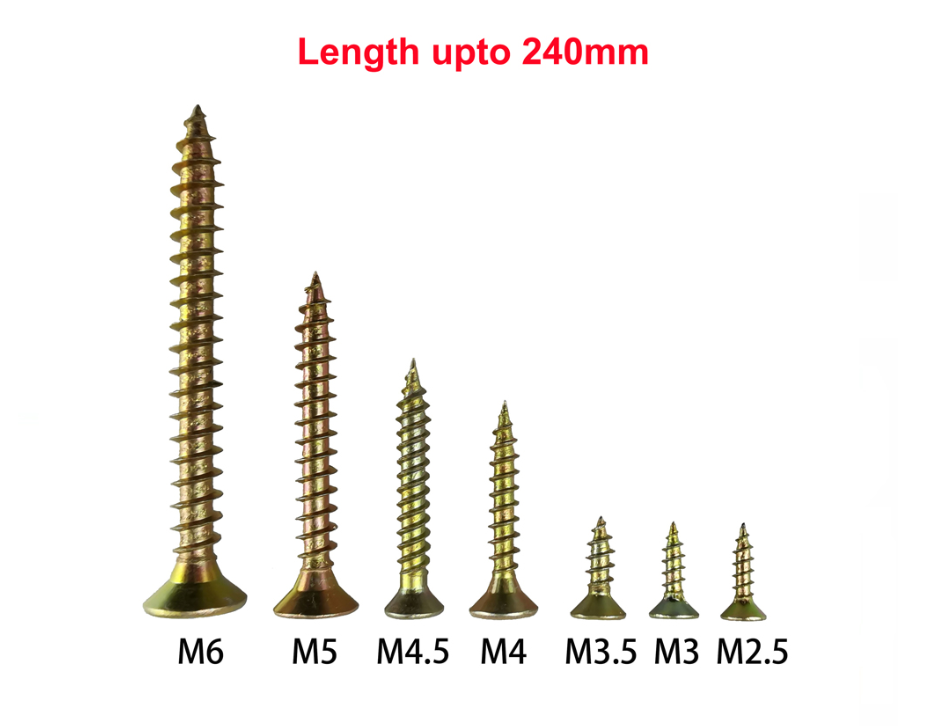VIS AGGLOMÉRÉ
The design of chipboard screws mainly considers the physical characteristics of cardboard. Due to the soft texture and limited thickness of cardboard, the structural design of the screw aims to provide sufficient fixing force without destroying the integrity of cardboard. Fine threads can form a good bite inside the cardboard, the sharp tip and thin rod are convenient to penetrate the cardboard quickly and non-destructively, and the small head is to meet the appearance requirements of cardboard products.
Chipboard screws need to have good flexibility to adapt to the slight deformation of cardboard in different environments (such as humidity changes). For example, in the manual model made of cardboard, if the environmental humidity changes, the cardboard may be deformed, and the chipboard screws can remain fixed with the deformation of the cardboard without breaking the cardboard.
Although chipboard screws don't need as high fixing strength as drywall screws or wood screws, it is necessary to ensure that cardboard can be effectively fixed in their application scenarios. In the normal use and handling process, such as the stacking of cardboard boxes, the movement of display racks, etc., the screws should be able to keep the cardboard connected.
-

Les vis à aggloméré sont dotées d'une tige mince avec un filetage très grossier qui s'enfonce plus profondément et plus étroitement dans le bois. En d'autres termes, plus de bois ou de panneau composite est intégré dans le filetage, créant une prise extrêmement ferme. Vis à bois csk zinguée Pozi Drive Double CSK Head Screw
-

Chipboard screws feature a slim shank with a very coarse thread that digs deeper and more tightly into the timber. In other words, more timber or composite board is embedded in the thread, creating an extremely firm grip. Zinc plated csk wood screw Pozi Drive Double CSK Head Screw
Application Scenarios of Chipboard Screws
Packaging industry: it is widely used in packaging boxes and boxes made of cardboard. Chipboard screws are used to fix all sides of the box to ensure that the box will not be scattered during transportation and storage. For example, in the production of express packaging boxes, chipboard screws can firmly connect the box cover and the box body together.
Hand-made and display field: it plays a role in the display rack and hand-made model made of cardboard. In the production of display stands, chipboard screws can fix cardboard parts of different shapes and sizes together to form a stable display structure. In manual model making, it can help to realize the splicing and fixing of various creative shapes.
Precautions for Installation of Chipboard Screws
Torque control: when installing, screw the screws into the cardboard with a small torque to avoid the cardboard from breaking due to excessive force. A manual screwdriver can be used, and the screwing strength can be controlled by experience according to the thickness and texture of the cardboard.
Control of penetrating layers: For fixing multi-layer cardboard, make sure that chipboard screws can penetrate all layers and provide sufficient fastening force. During installation, pay attention to the penetration of chipboard screws to ensure that each layer of cardboard is effectively fixed.
Appearance protection: If it is used for exhibitions or occasions where the appearance needs to be neat, pay attention to the position of the head of the chipboard screw so as not to affect the overall beauty as much as possible. The head of the chipboard screw can be installed in an inconspicuous position, or it can be covered by some decorative means (such as stickers, paintings, etc.).
How to Choose Screws Suitable for Specific Cardboard Projects?
If the cardboard is thin (for example, the thickness is less than 0.3 inch or 7.62mm), chipboard screws with shorter length (0.5-1 inch or 12.7-25.4mm) and smaller diameter (1-2mm) should be selected. Such screws can provide sufficient fixing force without penetrating the cardboard. For example, when making thin cardboard cards or labels, the use of short and thin screws can ensure firm fixation without affecting the appearance. For thick cardboard (thickness greater than 0.3 inches), screws with corresponding length (1-1.5 inches or 25.4-38.1mm) and slightly larger diameter (2-3mm) are needed to ensure penetration and firm fixation.
When fixing multi-layer cardboard, we should not only choose the appropriate length of chipboard screws considering the total thickness, but also pay attention to the tightness of the combination between each layer of cardboard. If there are more layers (for example, more than 3 layers), you can choose a slightly longer screw, and make sure that the chipboard screw can penetrate each layer smoothly when screwing in. In addition, for multi-layer cardboard, sometimes it may be necessary to add a small amount of glue between each layer to enhance the overall fixing effect, and the use of screws can better fix cardboard.



